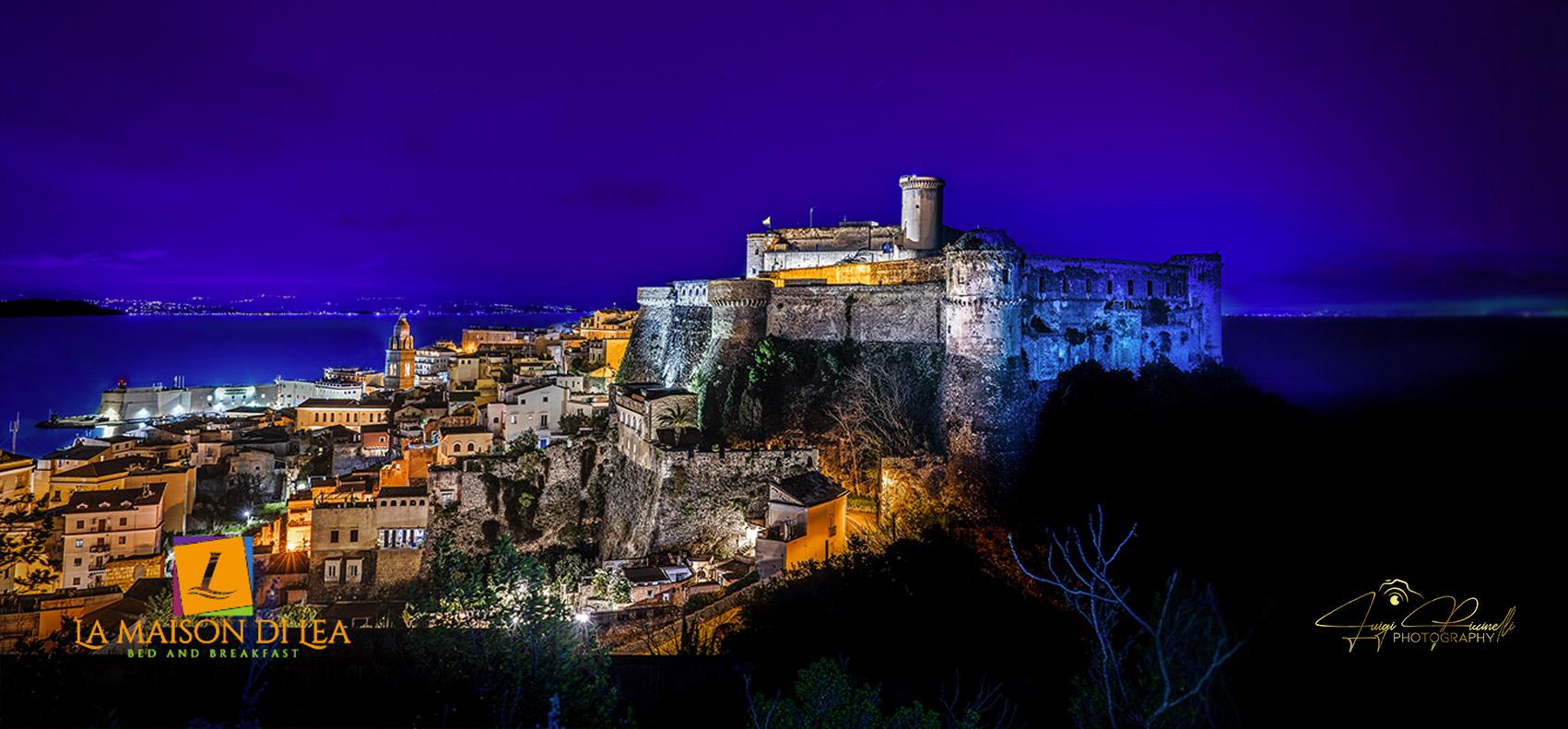La Maison di Lea a Gaeta | Dove inizia la vostra vacanza.
La storia:
Secondo Strabone, il nome
deriverebbe dal termine Gaetas, usato dai pescatori laconi per indicare il
sito, con chiaro riferimento all'ampia insenatura del suo golfo.
Altri invece ritengono che il sito e il golfo abbiano ricevuto lo stesso nome dalla nutrice di Enea.
Virgilio, nell'Eneide, trovò la sua origine nel nome della nutrice di Enea, Caieta, sepolta dall'eroe troiano in quel luogo durante il suo viaggio verso le coste laziali. Dante Alighieri, quasi a confermare la storicità dell'Eneide, ne riporta l'avvenimento.
I primi insediamenti nel territorio di Gaeta risalgono al IX-X secolo a.c., dopo essere stata parte integrante della regione Aurunca nel 345 a.c. il territorio di Gaeta finì sotto l’influenza di Roma.
Altri invece ritengono che il sito e il golfo abbiano ricevuto lo stesso nome dalla nutrice di Enea.
Virgilio, nell'Eneide, trovò la sua origine nel nome della nutrice di Enea, Caieta, sepolta dall'eroe troiano in quel luogo durante il suo viaggio verso le coste laziali. Dante Alighieri, quasi a confermare la storicità dell'Eneide, ne riporta l'avvenimento.
I primi insediamenti nel territorio di Gaeta risalgono al IX-X secolo a.c., dopo essere stata parte integrante della regione Aurunca nel 345 a.c. il territorio di Gaeta finì sotto l’influenza di Roma.

Sotto l'influenza romana Gaeta divenne un luogo di villeggiatura molto rinomato, imperatori, senatori, consoli e ricchi patrizi erano soliti trascorrere le vacanze nelle loro ville qui costruite.
Molte vestigia del periodo romano sono tutt'oggi visibili, come il Mausoleo di Lucio Munazio Planco sito su Monte Orlando. Fu console romano, prefetto dell’Urbe, generale di Giulio Cesare (con il quale attraversò il fiume Rubicone e nelle campagne galliche), generale sia di Marco Antonio che di Ottaviano detto Augusto.
Molte vestigia del periodo romano sono tutt'oggi visibili, come il Mausoleo di Lucio Munazio Planco sito su Monte Orlando. Fu console romano, prefetto dell’Urbe, generale di Giulio Cesare (con il quale attraversò il fiume Rubicone e nelle campagne galliche), generale sia di Marco Antonio che di Ottaviano detto Augusto.
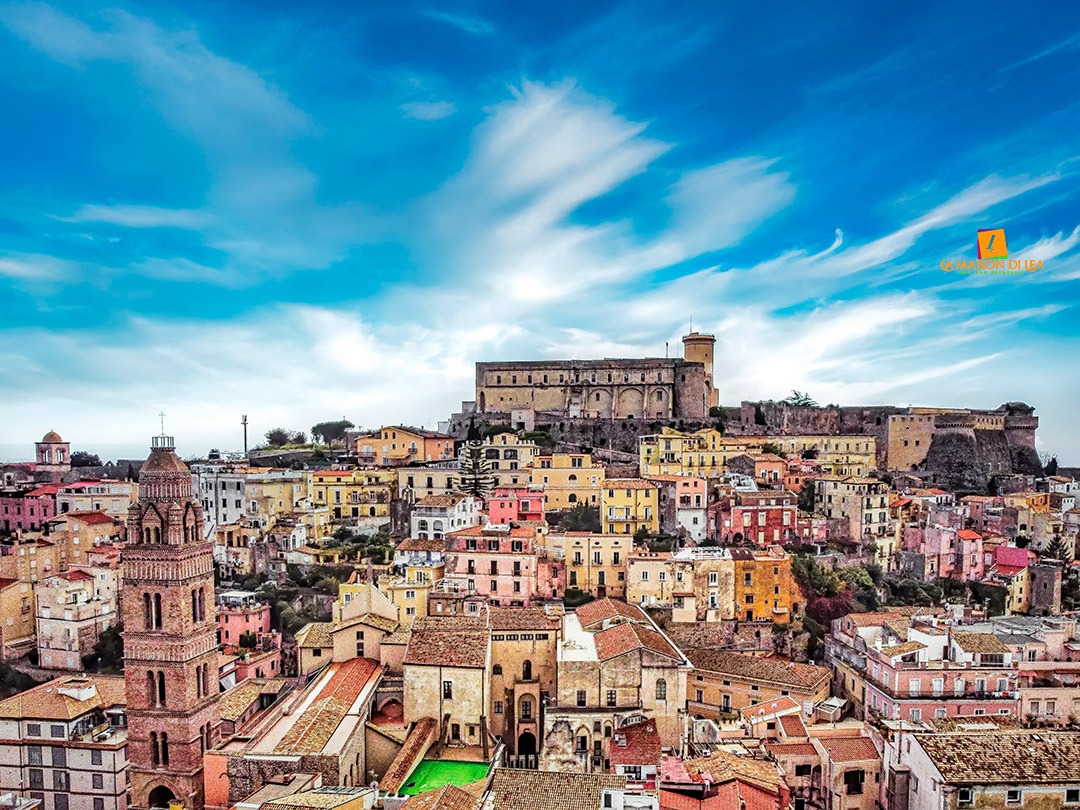
Medioevo:
Dopo la caduta dell’Impero romano d’Occidente la storia di
Gaeta conobbe un periodo di saccheggi sia da parte dei barbari che da parte dai
Saraceni ma grazie alla sua posizione di penisola naturale la città fu
fortificata con cinte murarie sulla cima dell’antico borgo medioevale sorse il
castello a difesa dell’abitato che diede riparo alle popolazioni delle zone
limitrofe che qui si trasferivano per rifugiarsi ed ottenere protezione.
La forza navale:
Nell'anno 812 nacque la prima flotta gaetana, allorquando
il patrizio bizantino Gregorio, governatore della Sicilia, sotto la minaccia
araba, fu costretto a chiedere aiuto al duca di Napoli e agli altri ducati campani.
La richiesta di Gregorio fu accolta da Gaeta e Amalfi che unite alle forze di Costantinopoli), sconfissero la flotta araba al largo di Lampedusa.
Nell'anno 839, il ducato di Gaeta conquistò la sua indipendenza che durò per oltre due secoli. Furono anni in cui Gaeta ebbe la sua solidità militare, la sua autonomia politica e giurisdizionale, i suoi istituti giuridici civici, un considerevole sviluppo economico attraverso i traffici commerciali marittimi e persino una propria moneta, il “follaro”.
Dall’839 al 1140 Gaeta può essere considerata a pieno titolo una repubblica marinara. Gaeta faceva parte della "Lega campana" che nell’estate dell’849 fu protagonista della battaglia di Ostia, la flotta era formata dalle navi delle repubbliche di: Napoli, Sorrento, Amalfi e Gaeta, sconfisse i saraceni pronti all’invasione e alla distruzione di Roma. Più tardi nel 915, ci fu un altro importante episodio bellico, il duca di Gaeta Giovanni I contribuì alla costituzione della Lega Cristiana che sconfisse i saraceni nella battaglia del Garigliano.
Nell'anno 839, il ducato di Gaeta conquistò la sua indipendenza che durò per oltre due secoli. Furono anni in cui Gaeta ebbe la sua solidità militare, la sua autonomia politica e giurisdizionale, i suoi istituti giuridici civici, un considerevole sviluppo economico attraverso i traffici commerciali marittimi e persino una propria moneta, il “follaro”.
Dall’839 al 1140 Gaeta può essere considerata a pieno titolo una repubblica marinara. Gaeta faceva parte della "Lega campana" che nell’estate dell’849 fu protagonista della battaglia di Ostia, la flotta era formata dalle navi delle repubbliche di: Napoli, Sorrento, Amalfi e Gaeta, sconfisse i saraceni pronti all’invasione e alla distruzione di Roma. Più tardi nel 915, ci fu un altro importante episodio bellico, il duca di Gaeta Giovanni I contribuì alla costituzione della Lega Cristiana che sconfisse i saraceni nella battaglia del Garigliano.
Dominazione sveva:
Il ducato di Gaeta restò indipendente fino all’inizio del XII secolo, Gaeta perse la sua indipendenza e fu conquistata da
Ruggiero II di Sicilia della dinastia degli Altavilla, che comunque lascio
numerosi privilegi alla città, come la moneta propria e una significativa
autonomia politica e gli permise di mantenere l’antico e glorioso carattere di repubblica marinara proprio come ad Amalfi.
Vide così la luce un regno che durò per i successivi sette secoli, un regno unitario, indipendente e sovrano, l’unico in tutta Europa a conservare integralmente per così lungo tempo i suoi limiti territoriali, con Gaeta a fungere in più occasioni da capitale “de facto” e strategica città di confine con lo Stato della Chiesa (tranne il periodo del vicereame spagnolo 1504-1707 e della dominazione austriaca 1707-1734).
Vide così la luce un regno che durò per i successivi sette secoli, un regno unitario, indipendente e sovrano, l’unico in tutta Europa a conservare integralmente per così lungo tempo i suoi limiti territoriali, con Gaeta a fungere in più occasioni da capitale “de facto” e strategica città di confine con lo Stato della Chiesa (tranne il periodo del vicereame spagnolo 1504-1707 e della dominazione austriaca 1707-1734).
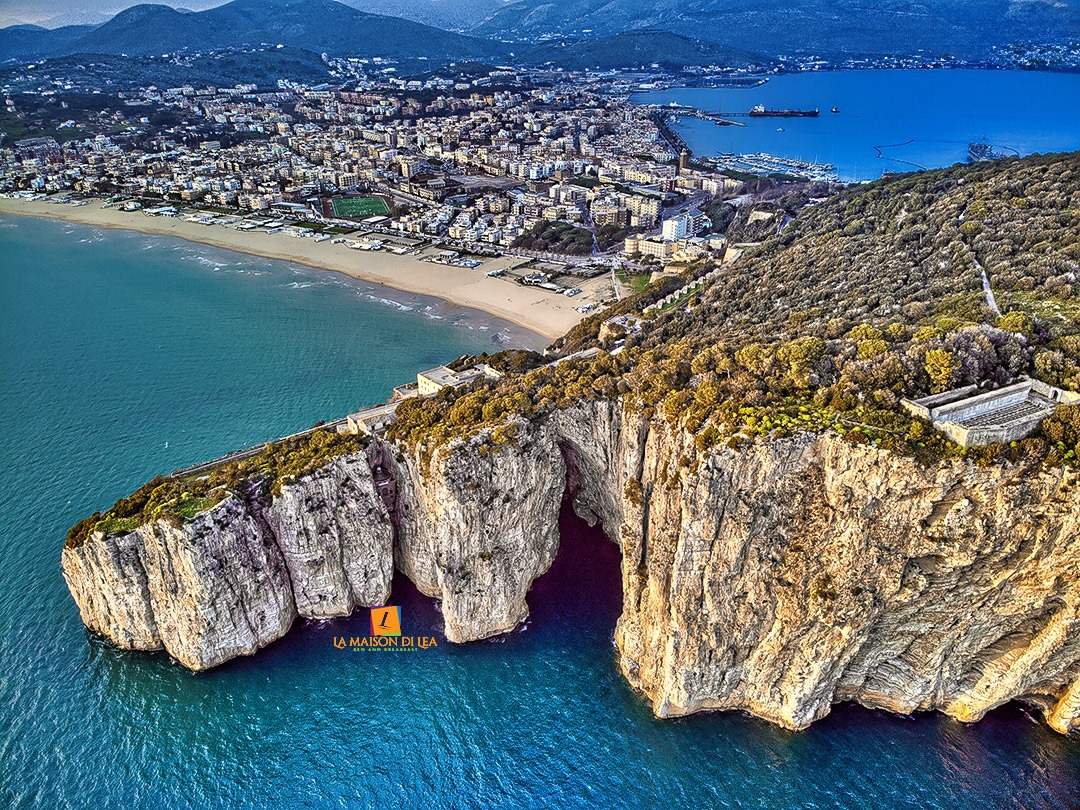
Sotto il governo della dinastia di origine sveva, Gaeta
vide particolarmente rafforzata la sua funzione di “chiave di accesso” al
regno. Federico II di Svevia fece creare delle fortificazioni per difendere meglio i
confini: nel 1223 fece costruire quelle per il castello di Gaeta.
I reali aragonesi, capirono quanto strategicamente fosse rilevante il possesso di Gaeta per la difesa del regno, e fecero aumentare le fortificazioni con l’aggiunta di due nuove cinte murarie. Gaeta subì ben 14 assedi, in concomitanza con importanti e cruciali avvenimenti storici, a partire dalla sconfitta del ducato di Gaeta (con annessione al Regno di Sicilia) fino all’ultimo assedio, decisivo per i destini del regno delle Due Sicilie, quello tenuto nel 1860-’61 dalle truppe del generale Enrico Cialdini e dopo il quale si ebbe la proclamazione del Regno d’Italia.
I reali aragonesi, capirono quanto strategicamente fosse rilevante il possesso di Gaeta per la difesa del regno, e fecero aumentare le fortificazioni con l’aggiunta di due nuove cinte murarie. Gaeta subì ben 14 assedi, in concomitanza con importanti e cruciali avvenimenti storici, a partire dalla sconfitta del ducato di Gaeta (con annessione al Regno di Sicilia) fino all’ultimo assedio, decisivo per i destini del regno delle Due Sicilie, quello tenuto nel 1860-’61 dalle truppe del generale Enrico Cialdini e dopo il quale si ebbe la proclamazione del Regno d’Italia.
Dominazione spagnola:

Con la dominazione spagnola, Gaeta divenne un vicereame, il ruolo di “piazzaforte” di Gaeta fu accentuato, Carlo V fece costruire fortificazioni bastionate, alle pendici del Monte Orlando, in modo da poter resistere alle più potenti armi da fuoco.Nell'anno 1571 la flotta pontificia si radunò nel porto di Gaeta, qui sotto il comando dell’ammiraglio Marcantonio Colonna, il 24 giugno, salpò per unirsi al resto della flotta cristiana per combattere i saraceni.
L'ammiraglia della flotta pontificia al comando dell'ammiraglio aveva issato lo Stendardo di Lepanto che lo stesso comandante aveva ricevuto il 20 giugno 1571 dal Papa San Pio V. La battaglia fu vinta dalle forze cristiane e al suo ritorno in Gaeta l'ammiraglio Marcantonio Colonna mantenne fede al giuramento fatto (avrebbe donato lo stendardo in caso di vittoria alla stessa Cattedrale ponendolo ai piedi del santo) davanti alle reliquie di Sant’Erasmo di Antiochia, protettore dei marinai e patrono della città. Oggi lo stendardo è esposto nel museo diocesano.
L'ammiraglia della flotta pontificia al comando dell'ammiraglio aveva issato lo Stendardo di Lepanto che lo stesso comandante aveva ricevuto il 20 giugno 1571 dal Papa San Pio V. La battaglia fu vinta dalle forze cristiane e al suo ritorno in Gaeta l'ammiraglio Marcantonio Colonna mantenne fede al giuramento fatto (avrebbe donato lo stendardo in caso di vittoria alla stessa Cattedrale ponendolo ai piedi del santo) davanti alle reliquie di Sant’Erasmo di Antiochia, protettore dei marinai e patrono della città. Oggi lo stendardo è esposto nel museo diocesano.
Dominazione borbonica:
Nel 1734 Gaeta fu conquistata da Carlo III di Borbone. Con
Carlo III il Regno di Napoli riconquistò dopo 230 anni la sua indipendenza
tornando ad essere lo Stato-Nazione più esteso e importante della penisola.Il 25 novembre 1848 il papa Pio IX si rifugiò a Gaeta,
ospite di re Ferdinando II di Borbone e vi rimase fino al 4 settembre 1849,
periodo durante il quale Gaeta fu sede istituzionale e capitale “de facto”
dello Stato della Chiesa.
Durante questo soggiorno papa Pio IX, illuminato dallo Spirito Santo durante le sue preghiere presso la Cappella d’Oro, decise di scrivere l’enciclica Ubi Primum con cui interrogava l’Episcopato cattolico sulla opportunità di proclamare il Dogma dell’Immacolata Concezione, cosa che avvenne al suo ritorno a Roma.Il 13 febbraio 1861 Francesco II di Borbone si arrese a Gaeta, ultimo baluardo del suo regno, capitolando, dopo 102 giorni di bombardamenti, all’assedio delle truppe sabaude del generale Enrico Cialdini (assedio di Gaeta 1860-1861): con la capitolazione di Gaeta cessò di esistere il Regno delle Due Sicilie.
Il Borgo di Gaeta, frazione di Gaeta fuori le mura, con Regio Decreto del 15 marzo 1897, diventò comune autonomo e prese il nome di “Comune di Elena” in onore dell’allora principessa Elena, futura regina d’Italia. Trenta anni dopo, con Regio Decreto del 17 febbraio 1927, i Comuni di Gaeta e di Elena vennero nuovamente uniti sotto il nome Gaeta. Il Borgo si identificò come rione Porto Salvo, la parte della città fortificata come rione Sant’Erasmo.
Il 6 febbraio 1927, Gaeta perse l’antica e famosa qualifica di piazzaforte ma divenne un’importante base della Marina Militare italiana, più in particolare il suo porto andò a costituire la principale base navale del Mar Tirreno insieme al porto di La Spezia.
La città di Gaeta parte importante dell’antica provincia di Terra di Lavoro del Regno di Napoli rappresentava uno dei cinque capoluoghi di distretto. All’interno del Regno d’Italia la provincia fu mantenuta con lo stesso nome e il medesimo capoluogo e fu suddivisa, in base alla legge Rattazzi, in circondari.
Gaeta fu capoluogo di circondario fino al 1927 (insieme a Caserta, Sora, Nola e Piedimonte d’Alife).
Quando nel 1927 il regime fascista riorganizzò gli ambiti amministrativi territoriali italiani, incorporò Gaeta nella provincia di Roma, dopodiché, nel 1934, nella neo-istituita provincia di Littoria, oggi provincia di Latina. Dal 1970, con l’istituzione delle regioni a statuto ordinario, Gaeta fa dunque parte della regione Lazio.
Durante questo soggiorno papa Pio IX, illuminato dallo Spirito Santo durante le sue preghiere presso la Cappella d’Oro, decise di scrivere l’enciclica Ubi Primum con cui interrogava l’Episcopato cattolico sulla opportunità di proclamare il Dogma dell’Immacolata Concezione, cosa che avvenne al suo ritorno a Roma.Il 13 febbraio 1861 Francesco II di Borbone si arrese a Gaeta, ultimo baluardo del suo regno, capitolando, dopo 102 giorni di bombardamenti, all’assedio delle truppe sabaude del generale Enrico Cialdini (assedio di Gaeta 1860-1861): con la capitolazione di Gaeta cessò di esistere il Regno delle Due Sicilie.
Il Borgo di Gaeta, frazione di Gaeta fuori le mura, con Regio Decreto del 15 marzo 1897, diventò comune autonomo e prese il nome di “Comune di Elena” in onore dell’allora principessa Elena, futura regina d’Italia. Trenta anni dopo, con Regio Decreto del 17 febbraio 1927, i Comuni di Gaeta e di Elena vennero nuovamente uniti sotto il nome Gaeta. Il Borgo si identificò come rione Porto Salvo, la parte della città fortificata come rione Sant’Erasmo.
Il 6 febbraio 1927, Gaeta perse l’antica e famosa qualifica di piazzaforte ma divenne un’importante base della Marina Militare italiana, più in particolare il suo porto andò a costituire la principale base navale del Mar Tirreno insieme al porto di La Spezia.
La città di Gaeta parte importante dell’antica provincia di Terra di Lavoro del Regno di Napoli rappresentava uno dei cinque capoluoghi di distretto. All’interno del Regno d’Italia la provincia fu mantenuta con lo stesso nome e il medesimo capoluogo e fu suddivisa, in base alla legge Rattazzi, in circondari.
Gaeta fu capoluogo di circondario fino al 1927 (insieme a Caserta, Sora, Nola e Piedimonte d’Alife).
Quando nel 1927 il regime fascista riorganizzò gli ambiti amministrativi territoriali italiani, incorporò Gaeta nella provincia di Roma, dopodiché, nel 1934, nella neo-istituita provincia di Littoria, oggi provincia di Latina. Dal 1970, con l’istituzione delle regioni a statuto ordinario, Gaeta fa dunque parte della regione Lazio.
Cosa vuoi visitare? (in costruzione)
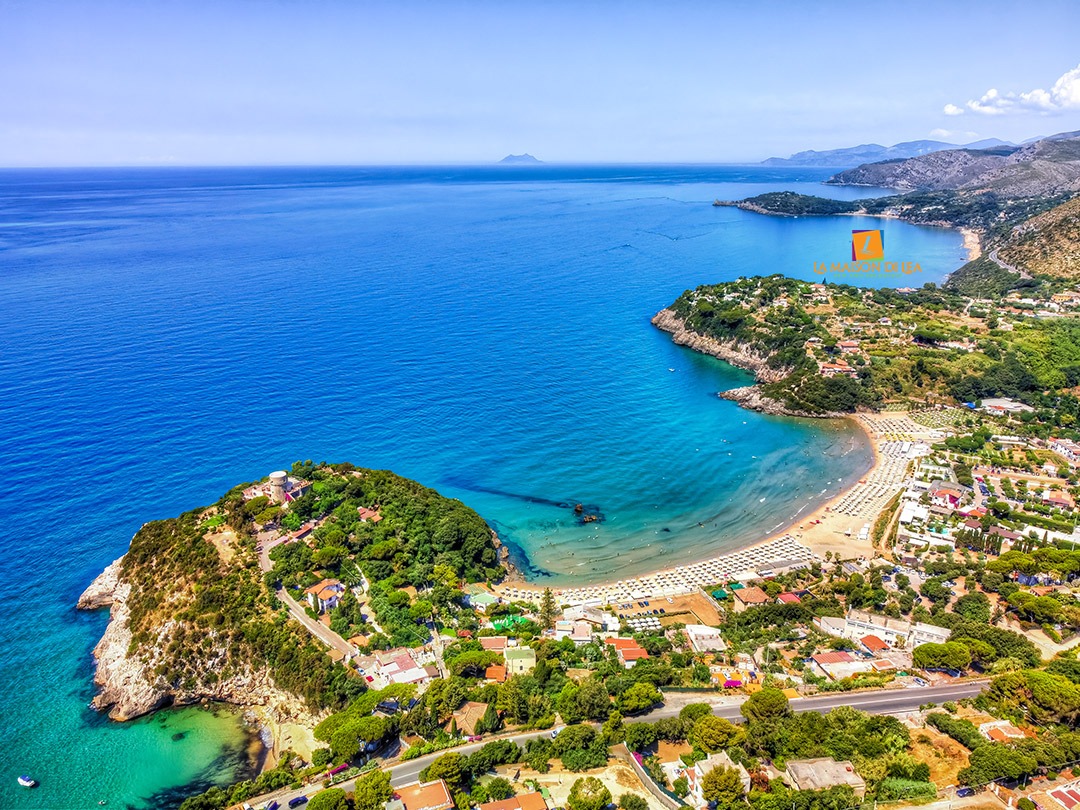
Spiagge
in costruzione

Monumenti
in costruzione

Castelli
in costruzione
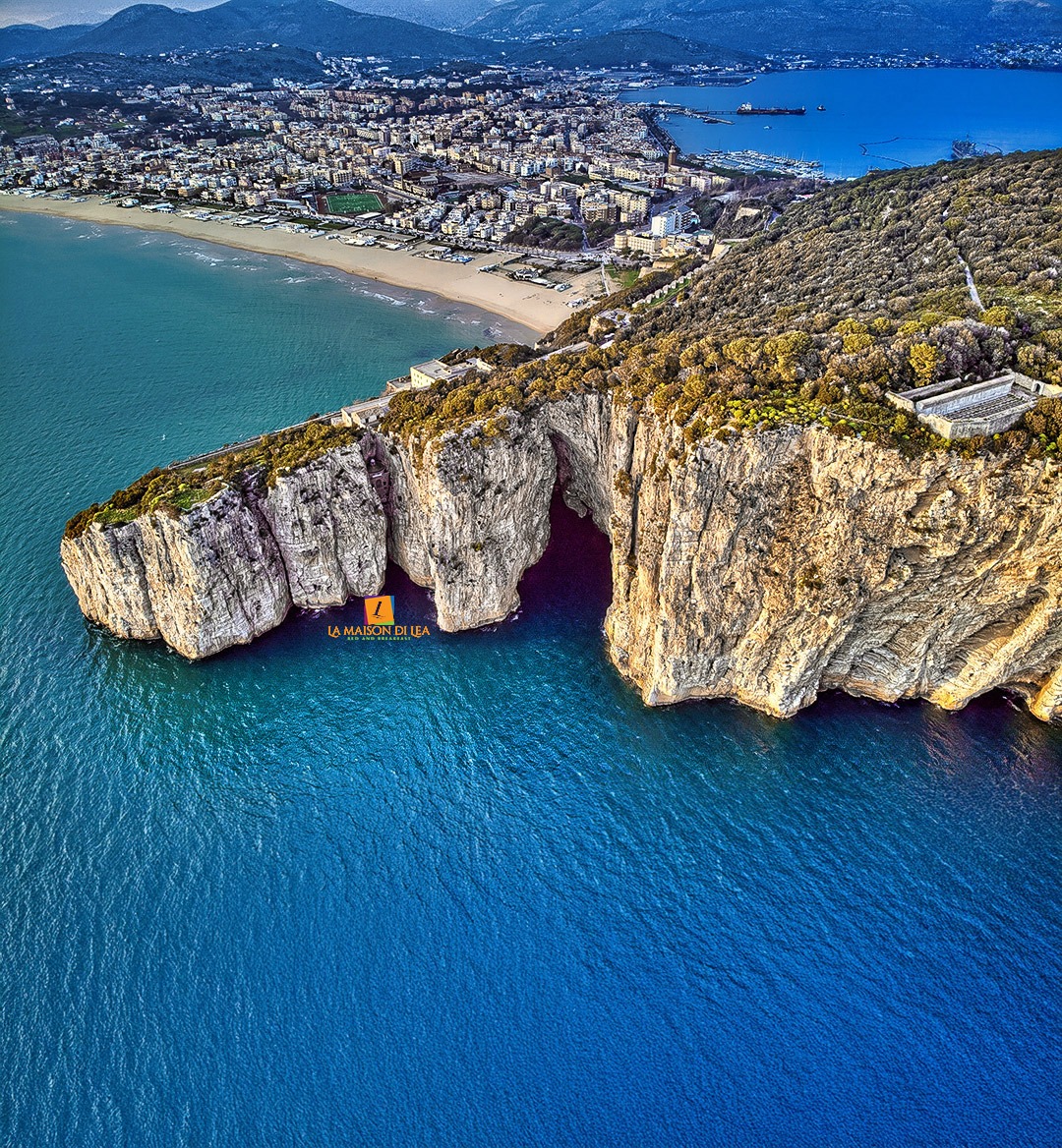
Montagna Spaccata
in costruzione
Dal 2022, offriamo un eccellente servizio in una struttura completamente ristrutturata.
Alla Maison di Lea, la tua comodità è la nostra priorità. Connessione Wi-Fi gratuita, TV a schermo piatto. La nostra colazione continentale (salata su richiesta), preparata con cura ogni mattina sulla terrazza (in camera in caso di maltempo), ti darà l'energia giusta per iniziare la giornata.

Perchè sceglierci?
Esplora i Dintorni
Nelle immediate vicinanze, troverai tutto ciò di cui hai bisogno, dal supermercato alla farmacia, rendendo il tuo soggiorno comodo e senza preoccupazioni.
Goditi una passeggiata sul lungomare appena fuori il vicolo, esplora le stradine della città vecchia o fatti catturare dalle luci e dai suoni delle famose luminarie (novembre-Gennaio), oppure assaggia le prelibatezze locali come la Tiella, le olive di Gaeta, la "votapiatto" di calamarelle gustoso piatto della tradizione gaetana. è un gustoso piatto tipico della tradizione gaetana.
Goditi una passeggiata sul lungomare appena fuori il vicolo, esplora le stradine della città vecchia o fatti catturare dalle luci e dai suoni delle famose luminarie (novembre-Gennaio), oppure assaggia le prelibatezze locali come la Tiella, le olive di Gaeta, la "votapiatto" di calamarelle gustoso piatto della tradizione gaetana. è un gustoso piatto tipico della tradizione gaetana.
Prenota Ora
La Maison di Lea è il luogo perfetto per un soggiorno indimenticabile a Gaeta. Prenota ora e regalati un'esperienza unica, tra storia, mare e comfort moderno.
Il nostro personale cordiale e attento sarà sempre a vostra disposizione per fornire consigli, assistenza e garantire un'ospitalità calorosa.
Vieni a scoprire la magia di Gaeta con noi, in estate al mare e in inverno in giro per le luminarie o per le manifestazioni enogastronomiche! Ti invitiamo a sfogliare le pagine del nostro sito per info sulla città, sugli eventi, storia etc, seguici anche sui social sempre aggiornati.
Il nostro personale cordiale e attento sarà sempre a vostra disposizione per fornire consigli, assistenza e garantire un'ospitalità calorosa.
Vieni a scoprire la magia di Gaeta con noi, in estate al mare e in inverno in giro per le luminarie o per le manifestazioni enogastronomiche! Ti invitiamo a sfogliare le pagine del nostro sito per info sulla città, sugli eventi, storia etc, seguici anche sui social sempre aggiornati.
Doing the right thing,
at the right time
1
Years of Experience

1%
Satisfied Customers

1/5
Google

1.7/10
Booking

1/5
Tripadvisor

Contattaci a mezzo mail
Inviateci un messaggio, risponderemo il prima possibile.
